If you’ve missed our first two entries in our countdown to the most fascinating gender-bending characters of psychotronic film, check out part 1 here and part 2 here! Today we’ve got another ten androgy-rific personas, with rock stars, prostitutes and, of course, murderers! As before, there are spoilers here for some last-minute trans-formative climaxes, so be wary!
If this isn’t enough giant list for you, be sure to check out the 50 Cult Movie Books Every Film Fan Should Own here and the Top 50 Freddy Krueger Victims here!
30. Bobbi/Dr. Robert Elliott
Michael Caine
Dressed to Kill (1980)
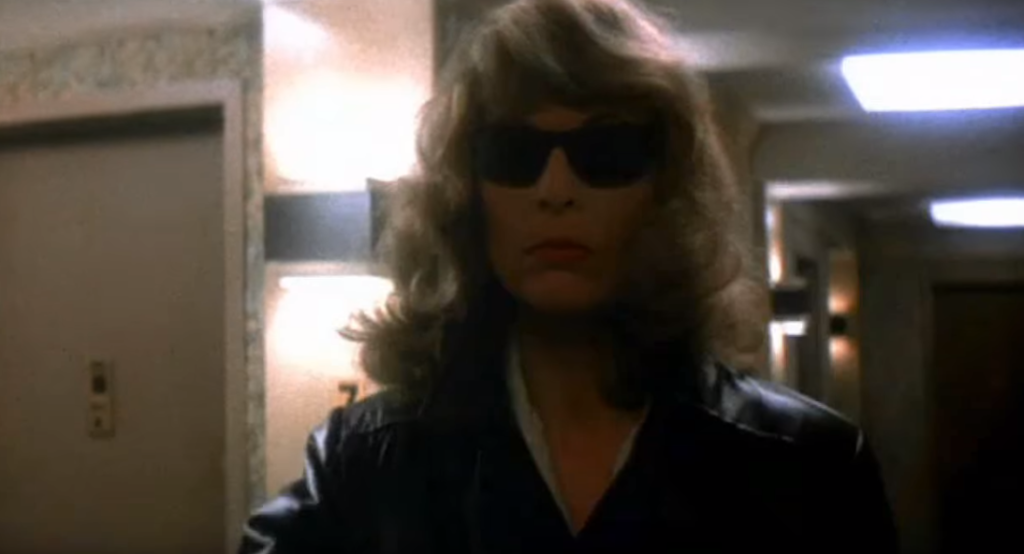
It’s not much of a spoiler to say that the person in female garb that murders Kate (Angie Dickinson) in the elevator in the first act of Brian De Palma’s DRESSED TO KILL is actually a man — the broad shoulders would be a dead giveaway even if the camera and lighting weren’t carefully (and obviously) positioned to conceal the killer’s identity. It’s not really even that surprising that it turns out to be Michael Caine, playing Kate’s psychiatrist Dr. Robert Elliott, especially after he mentions his transgender patient “Bobbi” who basically admits to the crime. Not only is Caine one of the only male suspects in the film, but he has the same name as the killer!
De Palma’s stab at a take on PSYCHO is certainly more entertaining than HOMICIDAL, cribbing the gender-bending, shower scenes and half-baked psychoanalysis from the Hitchcock classic and meshing them together in a typically visually inventive fashion. Sure, it’s a bit on the predictable side, but Caine gets to go from mellow therapist to crazed maniac in a dress, a task he clearly relished. Sure, it doesn’t make a whole lot of sense and “Bobbi”‘s homicidal tendencies are directly tied to his gender dysphoria (his male side wanted to make it with the ladies, his female side wanted a sex change, and when the two fought, there was bloodshed) but Michael Caine dressed like a razor-wielding villainous Bond girl is a sight few genre fans could forget.
29. Cleo/Leo
Jane Hamilton/Scott Baker
Cleo/Leo (1988)

Chuck Vincent may be better known for his hardcore films like ROOMMATES, but during the late ‘80s, he was one of the leading directors of both T&A comedies and erotic thrillers. CLEO/LEO is among his most entertaining films, and a great deal of that is due to the performance of actress Jane Hamilton (aka Veronica Hart), who gets a rare chance to show her comedic chops. Hamilton was clearly one of Vincent’s favorite performers, and after watching CLEO/LEO, it’s easy to see why.
Essentially another take on GOODBYE CHARLIE (or SWITCH), Scott Baker plays Leo, a misogynistic businessman who is murdered by a vengeful psycho and comes back as Cleo (Hamilton), a buxom woman. Forced to see the world through the eyes (and boobs) of the female gender, Cleo/Leo slowly learns her/his lesson about treating ladies fairly (mixed it with some required T&A that made this Cinemax fodder for the next decade), complete with a solid twist ending. Both Hamilton and Baker are hilarious in their embracing of the caricature that Cleo/Leo embodies even if some moments veer into forced comedy (why the heck would Cleo have problems just getting a dress off a hanger?), and watching Hamilton butch it up as a casually cigar-chomping womanizer is a pure joy to behold.
28. Roy/Wendy
Anne Heywood
I Want What I Want (1972)
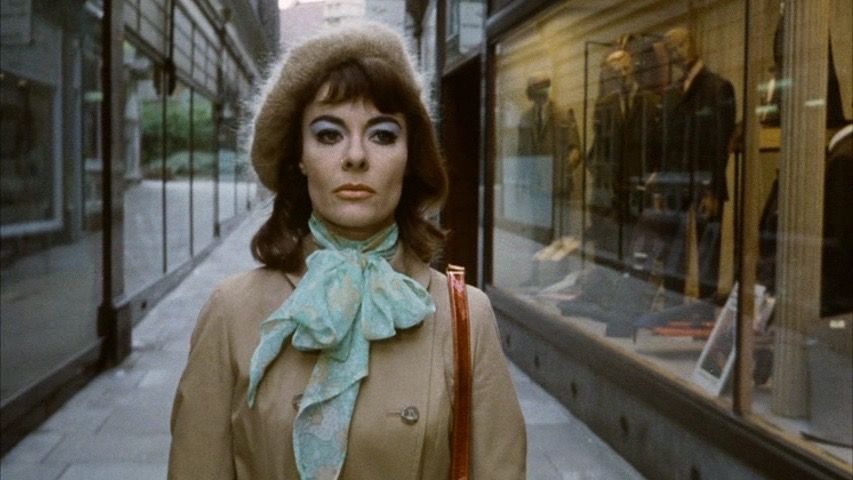
“God made man in his own image… and he blew it.” So Roy (GOOD LUCK MISS WYCKOFF’s Anne Heywood) states to her surly father (Harry Andrews) after he catches him in his sister’s outfits and full make-up. His father is disgusted by his son, who quickly leaves the house and begins a journey of transformation to Wendy, an entirely new identity with a history that eliminates her old family entirely.
The biggest flaw in Tony award-winning Broadway director John Dexter’s melodramatic I WANT WHAT I WANT is Heywood’s appearance. Heywood turns in a fantastic performance, and the scenes in which Roy first appears in women’s clothing or tries to apply eyelashes are things of Oscar-caliber beauty. But Heywood never really convinces as a man — no amount of suit wearing and posturing can hide her high cheekbones and feminine beauty. The resulting transformation is an acting triumph, even if you would think she’s a cis-woman that’s just acting suspiciously if you missed the film’s first half hour, at least until she meets up with her family again. The screenplay by Gilliam Freeman (THE LEATHER BOYS, THAT COLD DAY IN THE PARK) gives her plenty of good dialogue, especially when she’s talking to herself, and though the attitudes are mildly dated (a doctor explains that she won’t be a “real” woman after her operation), the movie manages to be compelling mostly thanks to Heywood’s performance.
27. Mae
Dick Shawn
Angel (1984)
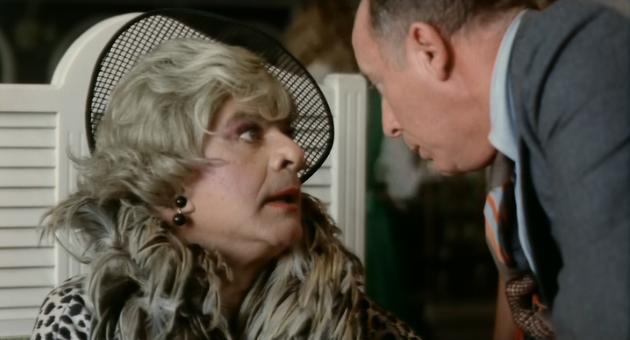
The exploitation flick ANGEL isn’t still watched today because of the generic “someone’s killing hookers” plot or anything noteworthy about the script. It’s stood the test of time because of performances by the likes of Donna Wilkes, Rory Calhoun, Susan Tyrrell and Dick Shawn, who infuse their roles with enough personality to move them beyond the stereotypes we get glimpses of in the film’s great vintage Hollywood Boulevard scenes and into being genuine characters you can root for.
Shawn, who plays a surrogate parent to Wilkes’ orphaned high-school-aged prostitute alongside Tyrrell’s butch painter, is clearly enjoying himself as Mae, a flamboyant transvestite who dresses to the low-rent hilt and spouts off one-liners to the amusement of his fellow streetwalkers. She never tries to “pass” as a woman, not altering her voice and barely bothering with make-up, content to just wittily bitch up a storm and letting her outfits speak for her, and the take on the character works perfectly with her flippant attitudes towards everything. It’s a genuinely heartfelt moment when Mae dies, the end to a character so well-conceived that one can excuse the fact that the serial killer is written to be a bisexual murderer because he was molested by his mother.
26. Velvet Von Ragner
Gene Simmons
Never Too Young to Die (1986)
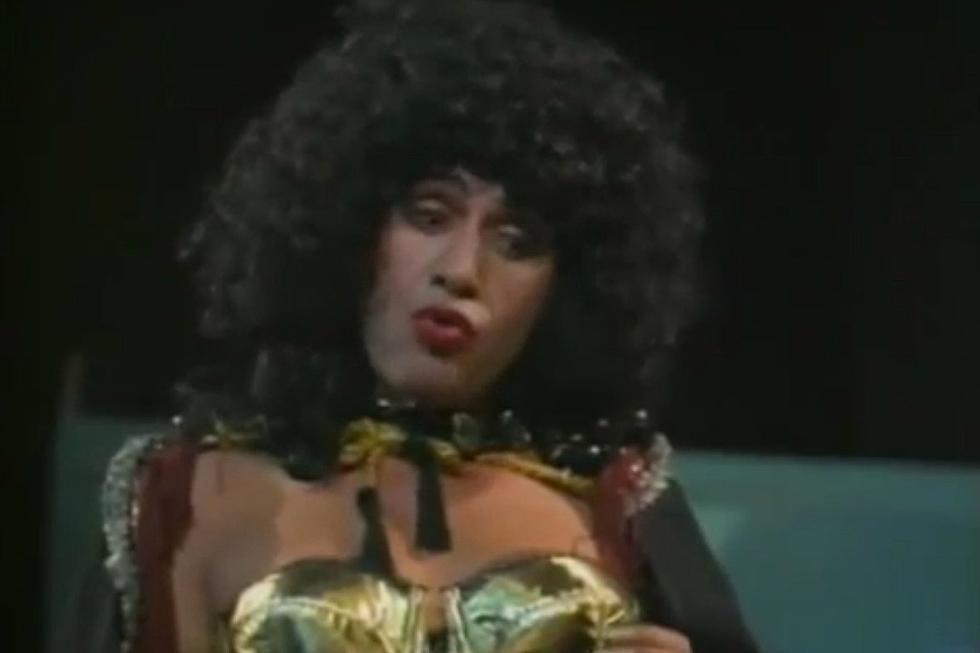
I’m pretty sure no thought whatsoever was given to any implications behind the character of Velvet Von Ragner, the outrageously flamboyant psychopath played by reality show fixture and occasional singer Gene Simmons in Gil Bettman’s loopy spy comedy. As written by the Paul brothers, the masters of ill-conceived ideas, Von Ragner is a hermaphrodite singing sensation who longs to take over the world or get money or something by poisoning drinking water and must be stopped by Lance Stargrove (John Stamos), the son of a secret agent (George Lazenby) whom he murdered.
It doesn’t make a damn bit of sense, but the role works because Simmons throws any sort of dignity to the wind, dressing in outfits that would make Cher roll her eyes and viciously attacking his foes with a deadly painted fingernail. (In a bit of meta-trivia, at one point Von Ragner wears an outfit that Lynda Carter wore when impersonating Simmons.) There’s no sense of reality to anything in NEVER TOO YOUNG, and Simmons stands out as the pinnacle of ridiculousness. He’s not so much playing a character as he is playing the living embodiment of the “evil transsexual,” and, honestly, it’s a performance only someone as self-absorbed and cocky as Simmons could pull off.
25. Heaven
Daniel Edwards
Heaven (1998)

What the heck did Scott Reynolds do to you, studios? After his first feature, the serial killer flick THE UGLY, was released, he looked to be a filmmaker to watch, but while his two subsequent thrillers, HEAVEN and WHEN STRANGERS APPEAR, were both great little crime films, both went straight to video in the United States with box art indistinguishable from countless other thrillers of the time, and he hasn’t directed a feature since 2001.
HEAVEN‘s title character is a transsexual exotic dancer, whose visions of the future either predict or create the lives of those around her, depending on your interpretation. More than a plot device, she’s a fully-formed character played to beautiful effect by Edwards. While she’s treated brutally by some of the characters in the film (including her abusive boyfriend/manager played by Richard Schiff), the film itself treats her with dignity, never making her gender history a gimmick. She’s a compelling character given relationships both good (with top-billed Martin Donovan and a young Karl Urban) and toxic, and her strength through everything that she goes through is inspiring, making HEAVEN a testament to turning a good thriller into a great one by caring for the characters within it.
24. Gretta Connors/Charlie White
Meredith Haze
Death Wish Club/Gretta/The Dark Side of Love (1985)
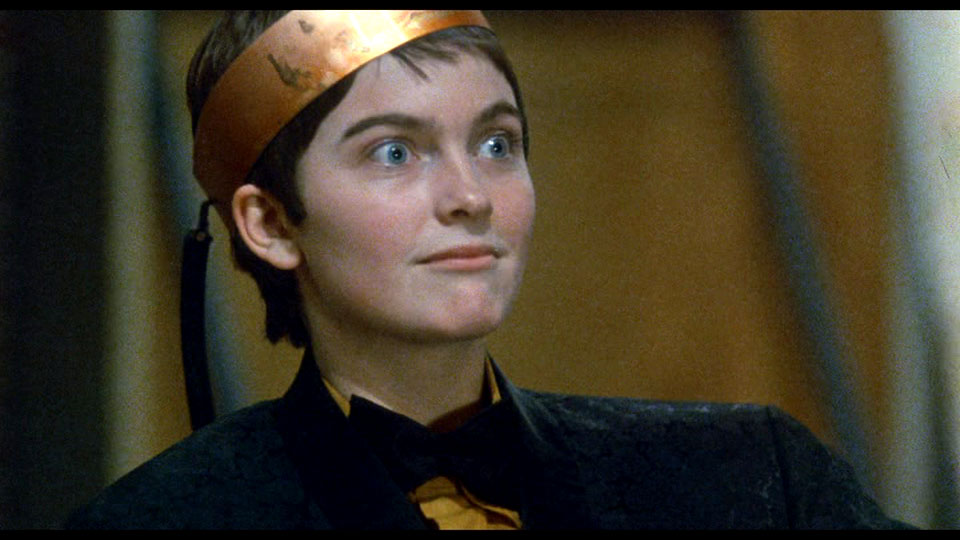
Gretta Connors is the type of character that a gender studies student would just throw up their hands at in frustration. Throughout most of the bizarre GRETTA, the title character is a woman, albeit a psychologically disturbed one who works as a pianist and porn starlet thanks to the prodding of a wealthy friend, and is occasionally convinced she is a fish. Then she fakes her death and returns as the male Charlie White, who takes over Gretta’s job (as a pianist) and relationship with the film’s lead character Glen. A therapist recommends that Glen essentially rape him back into his old identity, which doesn’t pan out, nor does trying to get him to do porn, but things finally go back to “normal” when Glen plants a smooch on “him” at his wedding to a transvestite whom he’d earlier mocked!
Even more confusingly is the edition of GRETTA truncated to be included in NIGHT TRAIN TO TERROR (recently issued by Vinegar Syndrome, with GRETTA as a bonus feature) that dispenses with all of the explanation for her gender switch, resulting in her just randomly turning into a boy two-thirds of the way through the story! It’s all a mind-bogglingly whacked-out tale (despite the best-known title of the film being DEATH WISH CLUB, the club itself is the most standard part of the plot) made captivating thanks to the performance by Haze in her only film. Constantly posing, preening, and giving wide-eyed glances as though she’s about to devour the camera using any body part she has available, Haze plays Gretta as though she’s auditioning for the Edy Williams role in a Russ Meyer movie, and Charlie like she’s the living embodiment of a hypersexual ventriloquist’s dummy. It’s nothing resembling a “normal” performance, but I dare you to look away no matter which gender Haze happens to be embodying at the time.
23. Oliver Shadey
Anthony Sher
Shadey (1985)
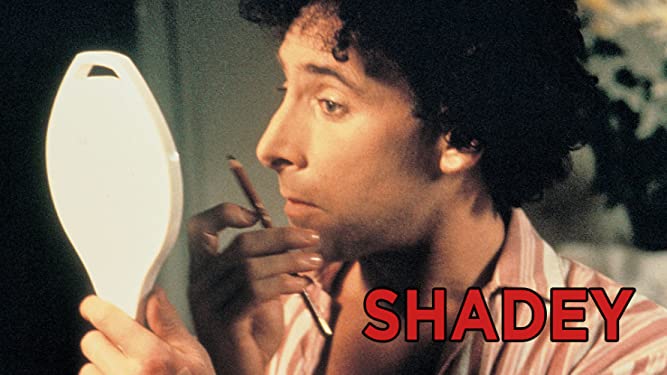
Oliver Shadey is a soft-spoken mechanic with telepathic tendencies made more powerful by his ability to transfer the images he sees onto film. He attempts to get money by selling his talents to a businessman (Patrick Macnee) who’s been sleeping with his daughter much to the chagrin of his long-suffering wife (Katherine Helmond), but he pawns her off onto a butch doctor (Billie Whitelaw) who has more sinister plans.
It’s to the credit of playwright Snoo Wilson, who made a rare foray into film here, and director Philip Saville (THE FRUIT MACHINE) that what Shadey needs to money for – a sex-change operation – is presented so matter-of-factly and without any judgment. It’s just one facet to Shadey’s character, and the trait falls by the wayside in deference to the curiously intriguing plot itself. SHADEY is the sort of oddball film that rarely gets made anymore, a mildly satirical science film allegory with tentacles in multiple genres without conforming to any of them.
22. Christy
Vaughn Cromwell
Street Wars (1992)
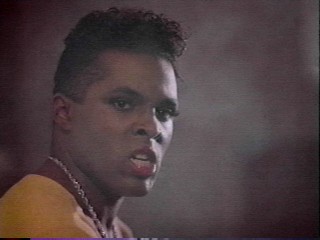
It’s quickly obvious that Christy is not the type of girl who’s going to be called a “faggot.” “I happen to be a proud homo sex child,” she exclaims to the underling making the slur in the crack den she mothers, her eyebrows quivering with rage. “That makes me a woman by desire and a man by nature! Now which one do YOU wanna deal with, motherfucker?”
Christy is awesome, one of the most badass trans characters in exploitation history, and one of the only ones to actually survive to see the end credits. She’s a cohort of the brother of our hero, Sugarpop, a military school hotshot pilot who comes home to find his sibling involved in a turf war in Jamaa (PENITENTIARY) Fanaka’s typically insane action epic. When the brother is murdered, Sugarpop teams with Christy and fellow underling Humungus (seriously, Fanaka gives his characters the best names — why the hell a gender-bending ass-kicker is given such a generic moniker boggles my mind) in order to get revenge, which they do by flying mini-planes all over town and taking out the competition.
Fanaka has a history of gay-friendly exploitation, with prison homosexuality portrayed in the PENITENTIARY movies, and even had a major trans character in PENITENTIARY III in the form of Jim Bailey’s Cleopatra before much of her sub-plot was excised. Here, however, Christy is just one part of Fanaka’s visionary madness of post-sync dubbed urban warfare. In a world of flying gangsters, a funeral that turns into a vibrant musical number and mobsters that keep vats of acid just hanging around, one of the chief “good guys” being a large-breasted biological male is just par for the course.
21. Glen/Glenda
Billy Boyd
Seed of Chucky (2004)
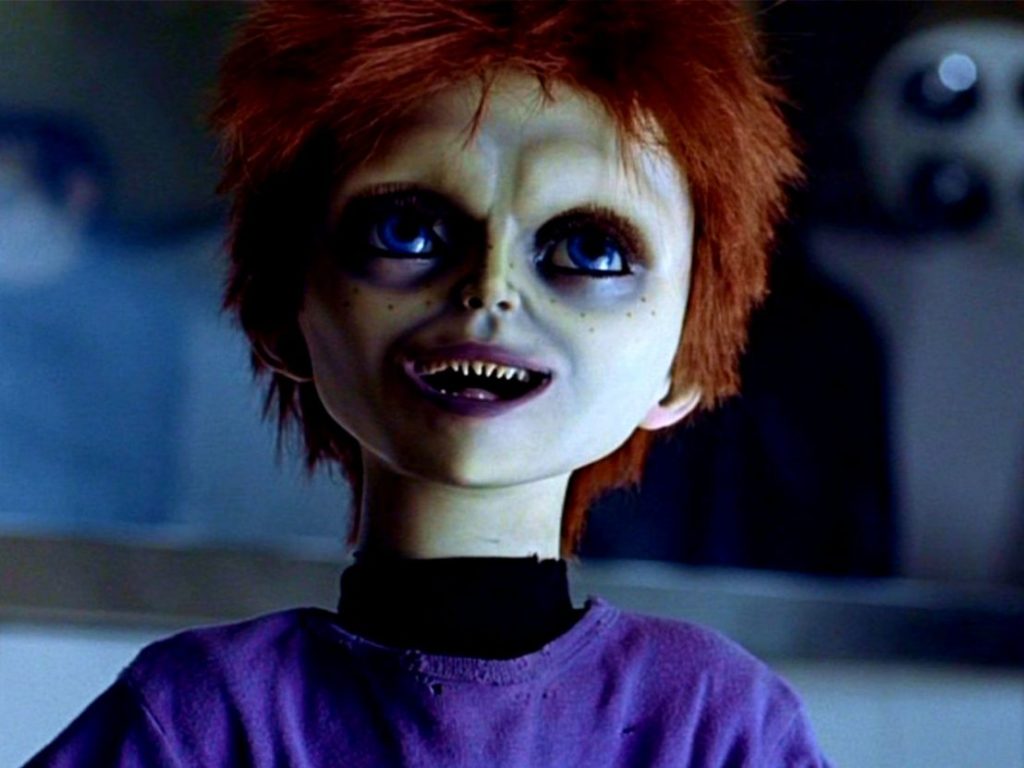
I imagine that the story behind SEED OF CHUCKY was just that Rogue Pictures said to Don Mancini, “make us another Chucky movie, I don’t care what it’s about,” because I have a hard time seeing a studio executive not blanching at the resulting explosion of meta-humor, pop culture references, transgender subtext and all-purpose splatter. We’re talking about a movie in which Jennifer Tilly and Redman play fictional versions of themselves, and John Waters gets fourth billing.
And we’re talking about a movie where the lead character outside of the two returning bloodthirsty puppets from BRIDE OF CHUCKY is a living genderless doll that resembles an ugly David Bowie, voiced by LORD OF THE RINGS‘ Billy Boyd. It’s a jaw-droppingly wild character, one that jumps from pitiable adolescent to psychotic transsexual during the running time, all while making cinematic references to the likes of REBEL WITHOUT A CAUSE and CHINATOWN. It’s also a terribly sympathetic character, and the jokes about Glen/Glenda’s reluctance to choose a gender are never leveled at his/her condition, but rather the way it’s treated by others. SEED OF CHUCKY may be wildly uneven as a film, but despite the lack of genitalia, Boyd’s Glen/Glenda is always consistently interesting to watch.
Check out part 4 here!
@Paul Freitag-Fey
- JIM WYNORSKI RETURNS WITH THE CREATURE FEATURE ‘GILA’ - May 1, 2014

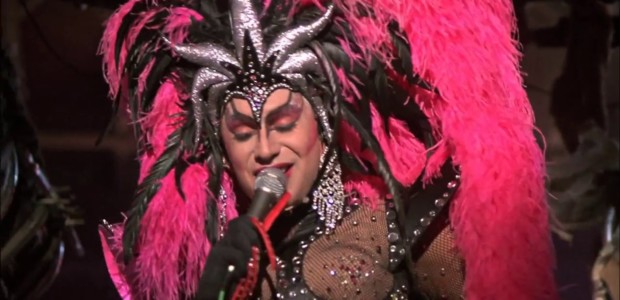

No Comments